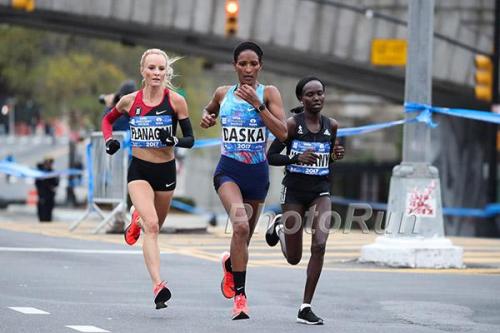 And then, there were three: Flanagan, Daska, Keitany, photo by PhotoRun.net
And then, there were three: Flanagan, Daska, Keitany, photo by PhotoRun.net
Justin Lagat provided this piece this morning, and provided us 4 observations on the fine marathon we just witnessed in New York City! Tell us what you think of our coverage! Please send us a note to runblogrun@gmail.com.
Some valuable observations made at the 2017 New York City Marathon
1. A leave from running due to injury or maternity could result in greater achievements when the athlete resumes running.
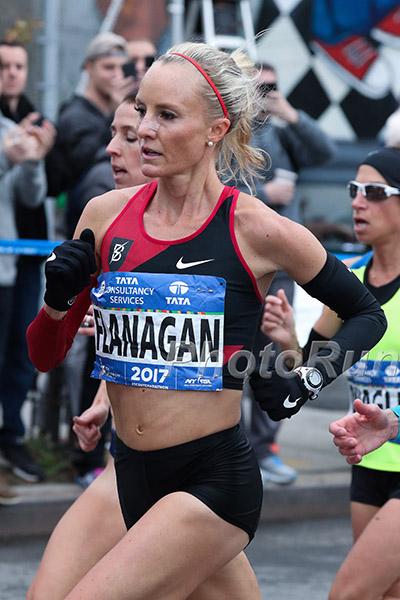 Shalane Flanagan, photo by PhotoRun.net
Shalane Flanagan, photo by PhotoRun.net
A break from running could serve to replenish strength in an athlete’s body. The last time that Shalane Flanagan ran a major marathon was last year at the Rio Olympic Games, where she had finished sixth. An injury on her lower back forced her to miss racing for over a year and when she came back to the New York City marathon, no other athlete could match her strength in the finishing stages.
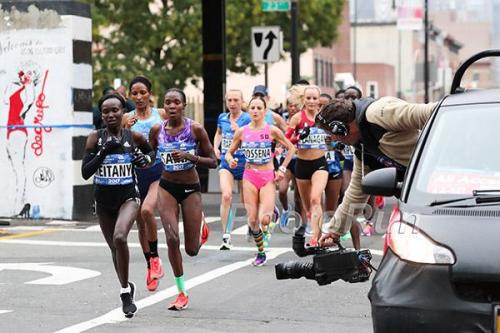 Mary Keitany, photo by PhotoRun.net
Mary Keitany, photo by PhotoRun.net
It was the same case for Mary Keitany in 2014 when she came back from a maternity leave and the New York City marathon was the first marathon she did and won. This was to be followed by two other consecutive wins in 2015 and 2016.
2. It is possible to run track, cross country and marathon and shine in all the events within the same year!
While many athletes continue training and getting confused on how to pick the best event they should be doing, Geoffrey Kamworor has consistently shown that one should not worry much since it is possible to do all the distances within a year.
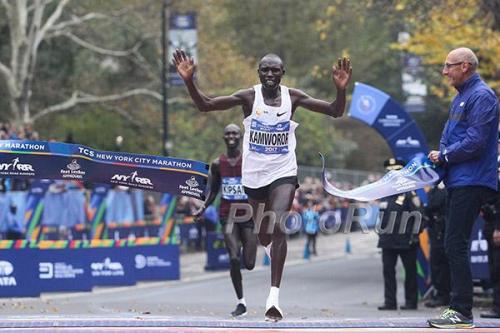 Geoffrey Kamworor, victory is here! photo by PhotoRun.net
Geoffrey Kamworor, victory is here! photo by PhotoRun.net
Kamworor won the IAAF world cross country championships in March, ran the 10,000m track event at the IAAF world championships in August where he finished sixth in an impressive time of 26:57.77 and now, in November he just won one of the most competitive marathons in the world.
3. Athletes ought to compete against their potential in a race and not let others dictate the pace for them
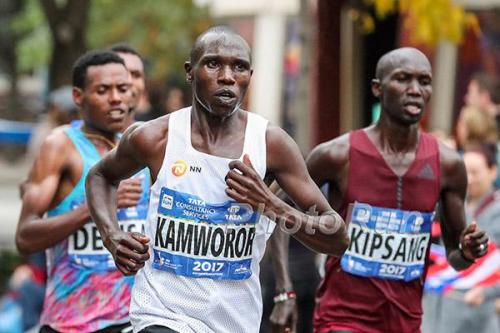 Geoffrey Kamworor, Wilson Kipsang, Lelisa Desisa duel, photo by PhotoRun.net
Geoffrey Kamworor, Wilson Kipsang, Lelisa Desisa duel, photo by PhotoRun.net
Immediately after the New York City marathon, I got a call from a long time coach in the US in which we discussed the race and one point we agreed on is that athletes should work on their strengths and take advantage of that in their races.
If one does not have a strong finishing kick, they should never let athletes with more experience on track and cross country running dictate the pace early on in the race since they will definitely have a better advantage in the end. Mary Keitany has always dominated her races by breaking away around the midway in her marathons, but this time round she did made a momentary move at around the 23km mark, but then slowed down again and let the rest catch up with her in a race that saw the leading pack increasing and decreasing until the last stages when three athletes finally made a decisive move to break away. It was almost the same case in the men’s race where the actual race happened in the last few kilometers.
After all, if one lets others dictate the pace for them then they would not be utilizing the specific training and the strategies they made ahead of the race.
4. How their training group members do, is a precursor to what one will likely do in a race.
With great performances from Eliud Kipchoge winning the Berlin Marathon, Abel Kirui finishing second at the Chicago marathon and Philemon Ronoh running the fastest time ever run on Canadian soil to win the Toronto Waterfront Marathon, Geoffrey Kamworor’s success in New York was easy to predict.
RelatedPosts
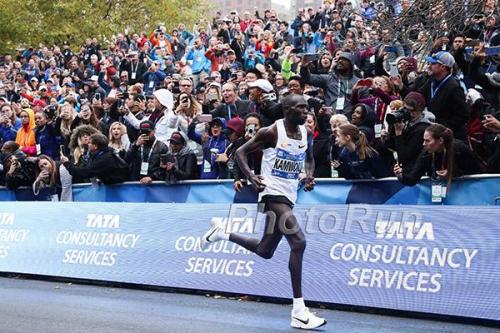 Geoffrey Kamworor, photo by PhotoRun.net
Geoffrey Kamworor, photo by PhotoRun.net
This as well goes ahead to boost the profile of coach Patrick Sang who trains them as perhaps the best marathon coach in the world currently.
Author

Since 2013, Justin Lagat has written for RunBlogRun. His weekly column is called A view from Kenya. Justin writes about the world of Kenyan athletics on a weekly basis and during championships, provides us additional insights into the sport.
View all posts




















